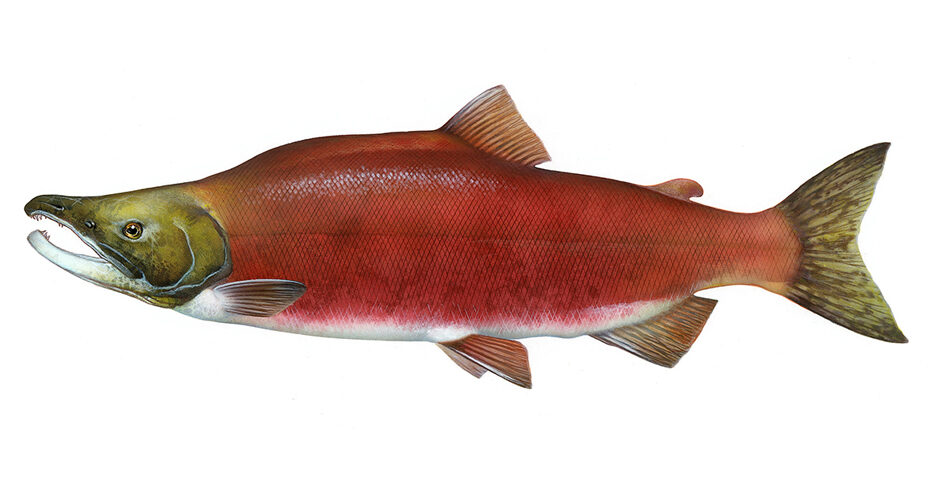Sockeye salmon is considered a premium salmon on the global market. But this unique fish species is more than just a meal.
This page celebrates the sockeye salmon. Learn about its love of lakes, freshwater variants, distribution, and more.
Overview of Sockeye Salmon
The sockeye is an iconic species of salmon known for its brilliant red spawning color and tasty lean meat. It’s a prolific fish able to thrive despite immense fishing pressure across the North Pacific. One of the defining features of sockeye is its dependence on lakes to complete its life cycle.
The sockeye has a freshwater life history variant called kokanee. Kokanee salmon spends its entire life in freshwater.
The life histories of sockeye and kokanee aren’t mutually exclusive. Where possible, kokanee can migrate to the ocean and become sockeye and vice versa.
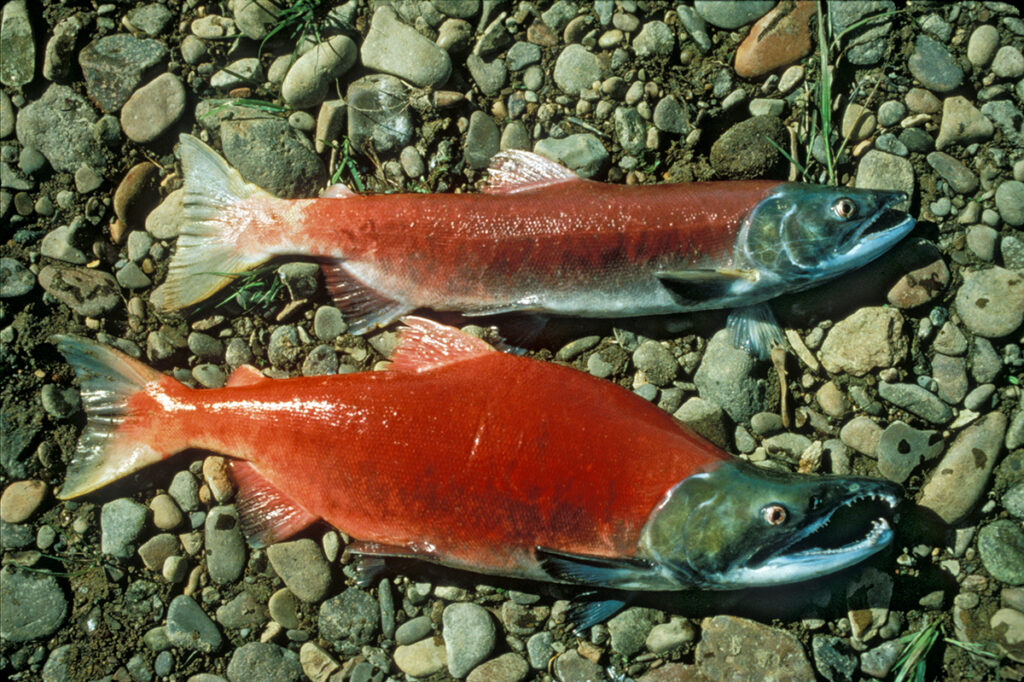
Species and Name: Sockeye, Red, Nerka
Sockeye salmon, scientifically known as Oncorhynchus nerka, are native to North America and Asia. Sockeye have several names depending on their location. “Nerka” is a Russian term for the anadromous sockeye. This stuck as the scientific name for the species.
“Sockeye” is an anglicized variation of the Halkomelem word “suk-kegh.” Halkomelem is a language of the Salish peoples of the southern British Columbia coast.
Red salmon is a common name used frequently in Alaska, one of the sockeye’s strongholds. “Blueback” is another term used for sockeye in the Columbia River system of Oregon, Washington, and Idaho.
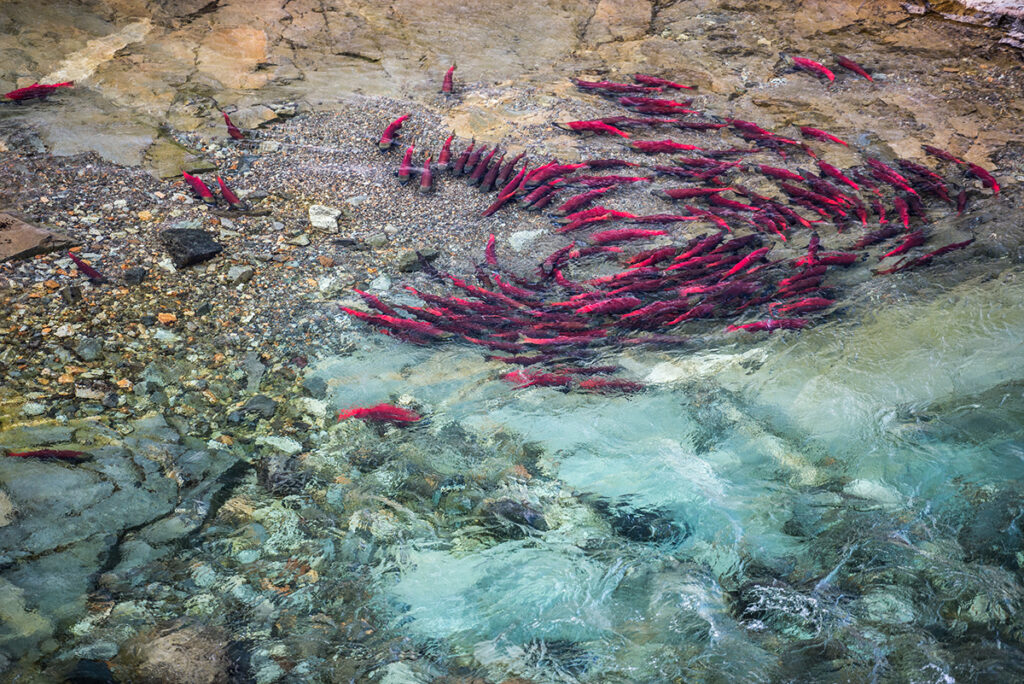
Range and Abundance of Sockeye
Sockeye salmon is the second most abundant naturally reproduced species after pink salmon. Including hatchery production, sockeye is third after chum salmon.
Its distribution encompasses the eastern and western North Pacific. The heart of the sockeye salmon range is in Alaska and British Columbia.
In Asia, the distribution of sockeye is narrower and patchier. Populations occur as far north as the Anadyr River of Siberia. And the southern limit extends to the Kuril Islands, just north of Japan. However, the majority of sockeye salmon in the western Pacific are found in Kamchatka and Bering Sea tributaries.
Some populations of sockeye make remarkable upstream spawning migrations. A Redfish Lake, Idaho population travels over 900 miles (1,400 km) and ascends 6,500 feet (2,000 m) above sea level.
Sockeye Size and Morphology
The sockeye is a small to average-sized salmon. It averages between 4.4 and 8.8 pounds (2-4 kg) at maturity. But it grows as large as 15lb 3oz, the all-tackle IGFA record sockeye salmon.
Mature sockeye and kokanee have red bodies with green heads and white lower jaws. But in lakes and the ocean, they are iridescent silver with metallic blue-green backs. No spots are present on sockeye, but kokanee may have them on their backs and tail.
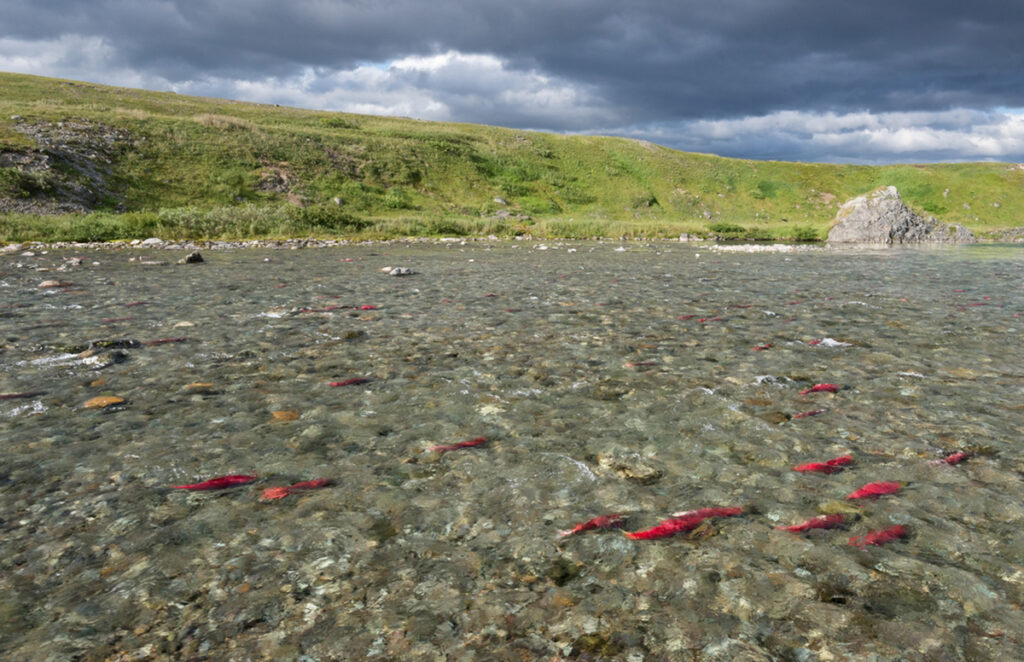
Life Cycle of Sockeye Salmon
Sockeye salmon display diverse life histories. Most are anadromous, migrating from freshwater to the ocean as juveniles and returning to their natal freshwater to spawn as adults. Both sockeye salmon and kokanee are semelparous, meaning they perish after spawning.
The carcasses of sockeye and kokanee contribute nutrients to streams and riparian environments. Many animal species depend on this nutrient-rich bounty.
Most sockeye salmon spend two to three years in the ocean before returning to freshwater for spawning. Kokanee remain in freshwater lakes throughout their lives and do not migrate to the ocean.
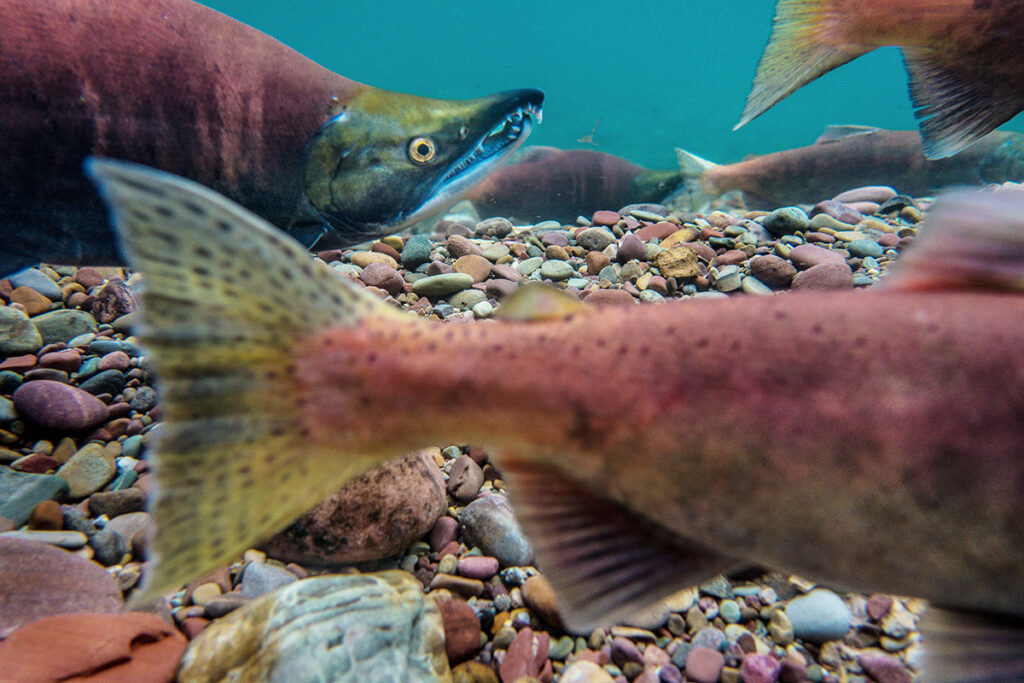
In North America, most sockeye salmon spawn in tributaries or outlets of lakes. Some populations utilize gravel beaches within lakes instead. These fish are sometimes referred to as lake-type sockeye.
River-type populations of sockeye also exist. They don’t rely on lakes for their life history. Instead, they typically spend about one year in rivers before migrating to the ocean. River-type sockeye are common in Kamchatka but are less so in North America.
Female sockeye salmon usually spawn in 3-5 redds over several days. Despite having small eggs, sockeye exhibit high fecundity, with over 3,000 eggs on average.
Sockeye salmon eggs usually hatch within six to nine weeks. Emerging fry typically measure a little over an inch (26 and 29 mm) in length and instinctively head to a lake, whether downstream or upstream. Most fry rear in lakes for one to two years before migrating to the ocean. Some populations of sockeye salmon may even migrate to saltwater in their first year.
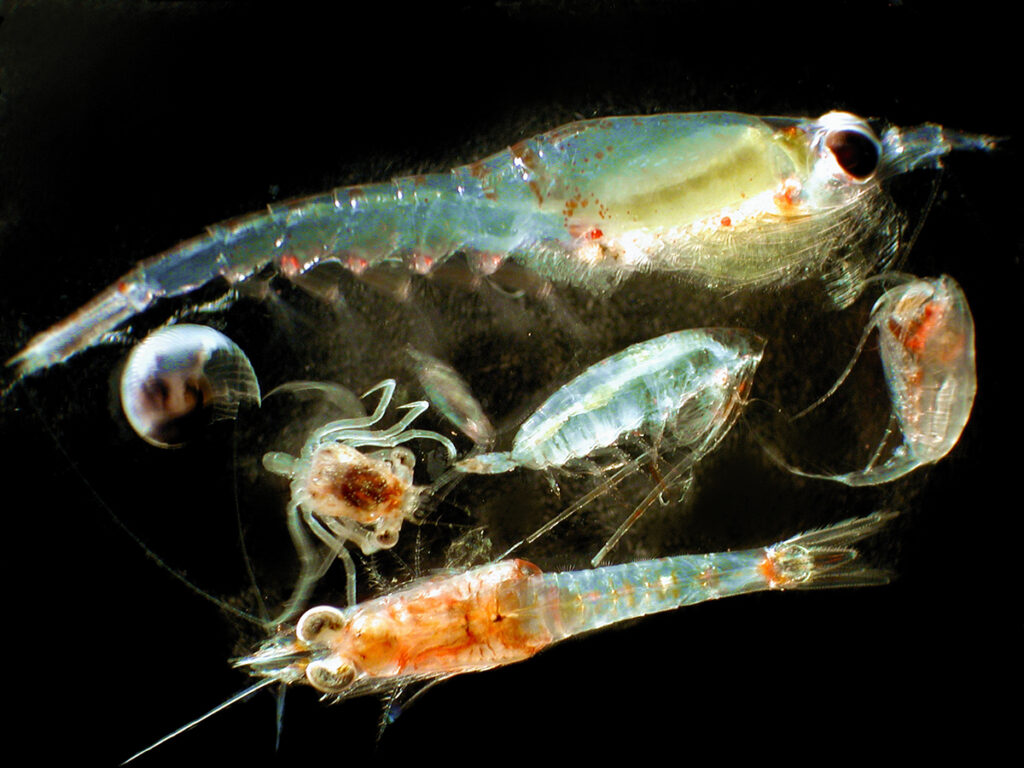
Sockeye Salmon Diet and Feeding Behavior
Sockeye salmon exhibit patterns of limnetic (open water) feeding behavior. This includes vertical movement, schooling, diel feeding chronology, and zooplankton prey selectivity.
Sockeye adjusts their behaviors to minimize predation risk while ensuring sufficient food intake for survival.
Sockeye salmon have a varied diet. They consume zooplankton extensively during all life stages. Sockeye also feed on small aquatic organisms like shrimp and incorporate insects into their diet during the juvenile stage.
Resilient Red Salmon
The sockeye salmon is beloved for its tasty, nutrient-rich meat and has sustained many cultures for thousands of years. But it isn’t as often appreciated for its unique life cycle and ecological benefits.
Sockeye and kokanee are vital parts of the food chains at every step of their lives. Their bodies bring nutrients from the ocean to less productive habitats on land, feeding many organisms.
Through respect for this remarkable animal, we can ensure the sockeye continues to thrive.
